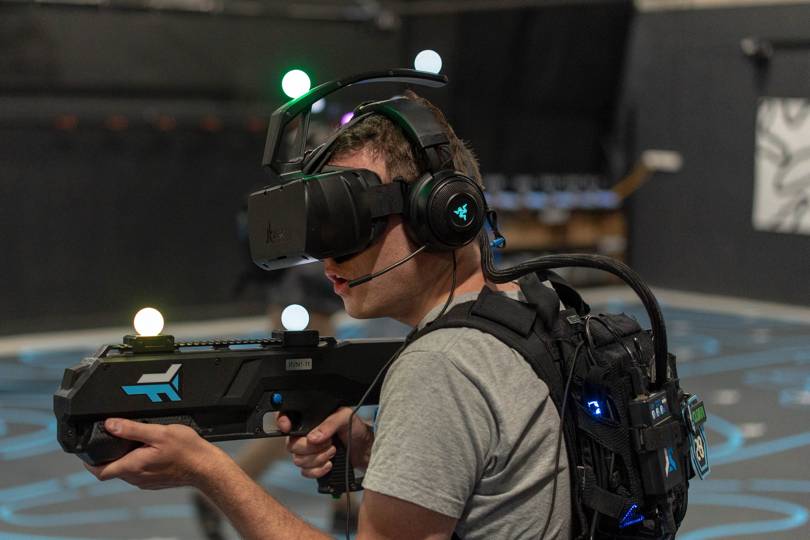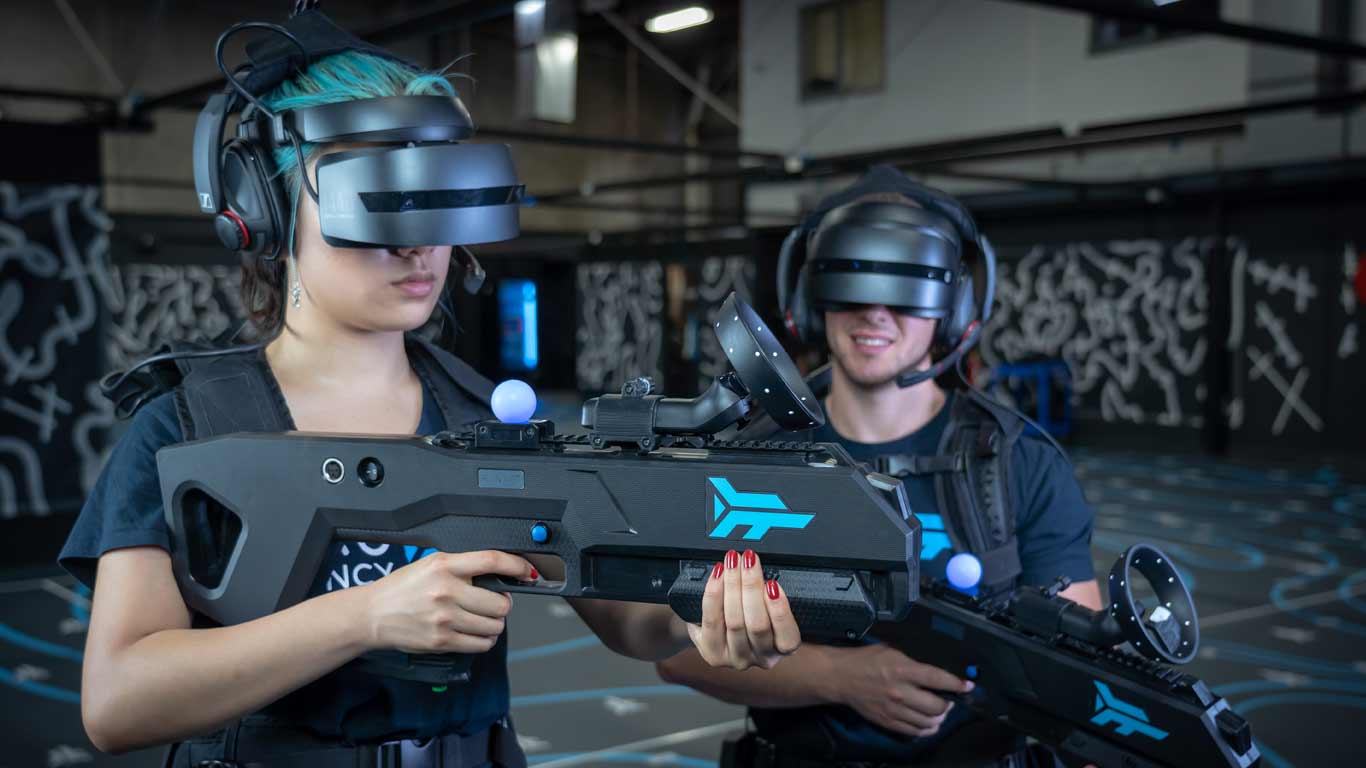Zero Latency provides systems for warehouse-scale, location-based VR experiences in cities across the world, letting you and up to seven others roam around a huge area with physical prop guns you can use in-game. It is kind of like a cooperative VR version of laser tag.
The idea is that you and your friends can move around freely in the warehouse, using a backpack PC to avoid tethered wires. Most of the experiences are co-op, but they also offer a fairly new PvP experience which we tried out in February. As a whole, we’ve had mixed results with Zero Latency in the past. The game design has been mixed in quality, and their original open-source-based VR headsets weren’t the greatest when used in conjunction with their proprietary tracking system.

Zero Latency, however, announced they were going to overhaul the system away from the OSVR headsets to a second generation that uses HP hardware as part of a deal they struck earlier in the year. After my last visit a few months ago, Zero Latency invited me back to their North Melbourne location – one of a few that adopted the new Gen 2 system already.
The upgrade includes new HP computer backpacks and headsets. In some cases, that means the headsets will be HP Reverbs. For five of the current Gen 2-ready locations, however, the older HP VR headsets were used running Microsoft’s Mixed Reality system. The North Melbourne location was one of those five. Zero Latency says future upgraded locations will use Reverb.
I asked Zero Latency CEO Tim Ruse why they chose to go with the Reverb, as opposed to other options.
“Probably the resolution and the quality,” he said. “It’s a really good headset and it’s pretty comfortable compared to other stuff that’s out there. And it goes really well with the HP backpack.”
Ruse noted each of the 38 Zero Latency locations is run by a licensed owner and it is up to each location to choose their upgrade path.

The original Zero Latency system used OSVR headsets with a gun peripheral and glowing balls mounted on the top of both. Tracking was done externally for each player via overhead mounted cameras tracking the glowing balls. There are also blue patterns on the floor used to help determine position.
The HP headsets feature two outward facing cameras that provide inside-out tracking similar to an Oculus Quest, Rift S, Cosmos and others. According to Zero Latency, the new HP headsets still use the existing blue patterns on the floor to help determine your position in the play area and relative to others but, crucially, all of this tracking is all done on the players’ headset alone and no longer uses the external cameras mounted overhead from the Gen 1 system. The headset’s inside-out tracking system also tracks a Windows controller mounted to the gun prop, instead of the old glowing balls.
“The gun is essentially [now] locally tracked,” he said. “Before, it was the positions travelling through the tracking system and back out. Whereas, your perception of the gun is [now] all local. It’s going all through the WMR tracking specifically, not out through an external tracking system. It feels way snappier.”
I could really feel the difference and it is one of the most noticeable improvements of the new system. The guns now feel snappy and sharp with low latency. Most important, they feel really fun to use. I felt in control of my aim the whole time and I didn’t get as frustrated with aiming as I did in the old system. The gun-play seemed much more skill-based and I was talking long range shots that didn’t seem possible with the original OSVR setup.
Inside Out Arena Scale Limitations
While I found the overall experience improved with the HP-based system compared with the first generation of Zero Latency, I also noted limitations. There were a few instances, for example, where a player’s gun would appear lodged in the ground, far away from where they were standing with the prop. The fix was to just look directly at the gun prop and move it around a bit.
My head movement also seemed susceptible to occasional frame drops and momentary freezes. Fast actions also resulted in my movements sometimes feeling like they were smoothed over, or “averaged out”, when translated back onto the screen – the finer detail and incremental movements of my head sometimes felt like they were lost in translation during a big sweeping motion. When I approached a physical wall, the positional tracking went haywire. Despite all this, I did find the overall experience to be quite a bit better than the first generation — a change likely attributable to the abandonment of OSVR hardware.
I would expect some casual VR players to come away impressed by the upgrade. The gun props feels much more responsive and the experience is notably more fun because of that. But there are still more improvements needed to iron out occasional tracking glitches in an inside-out-based system at this scale.

























